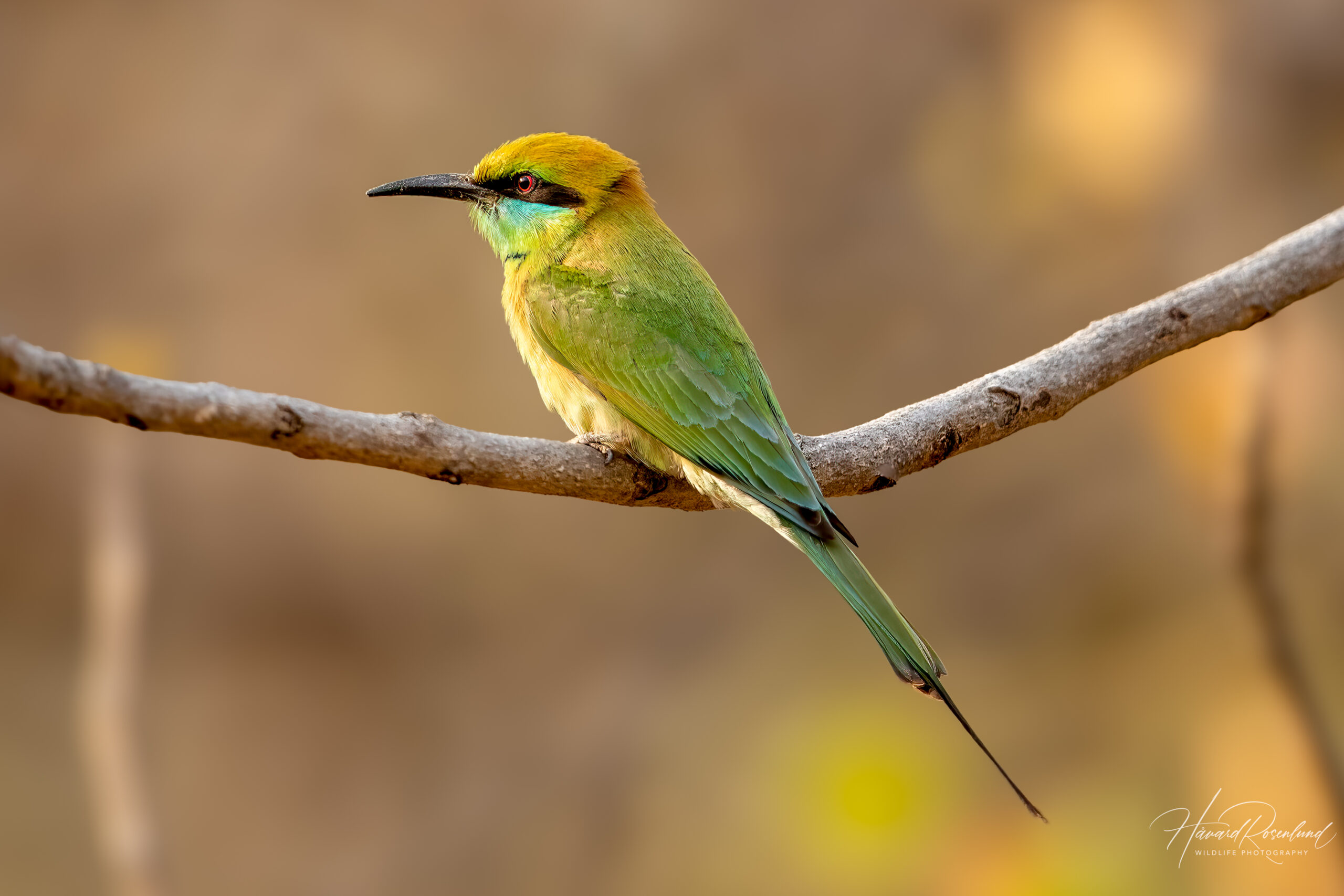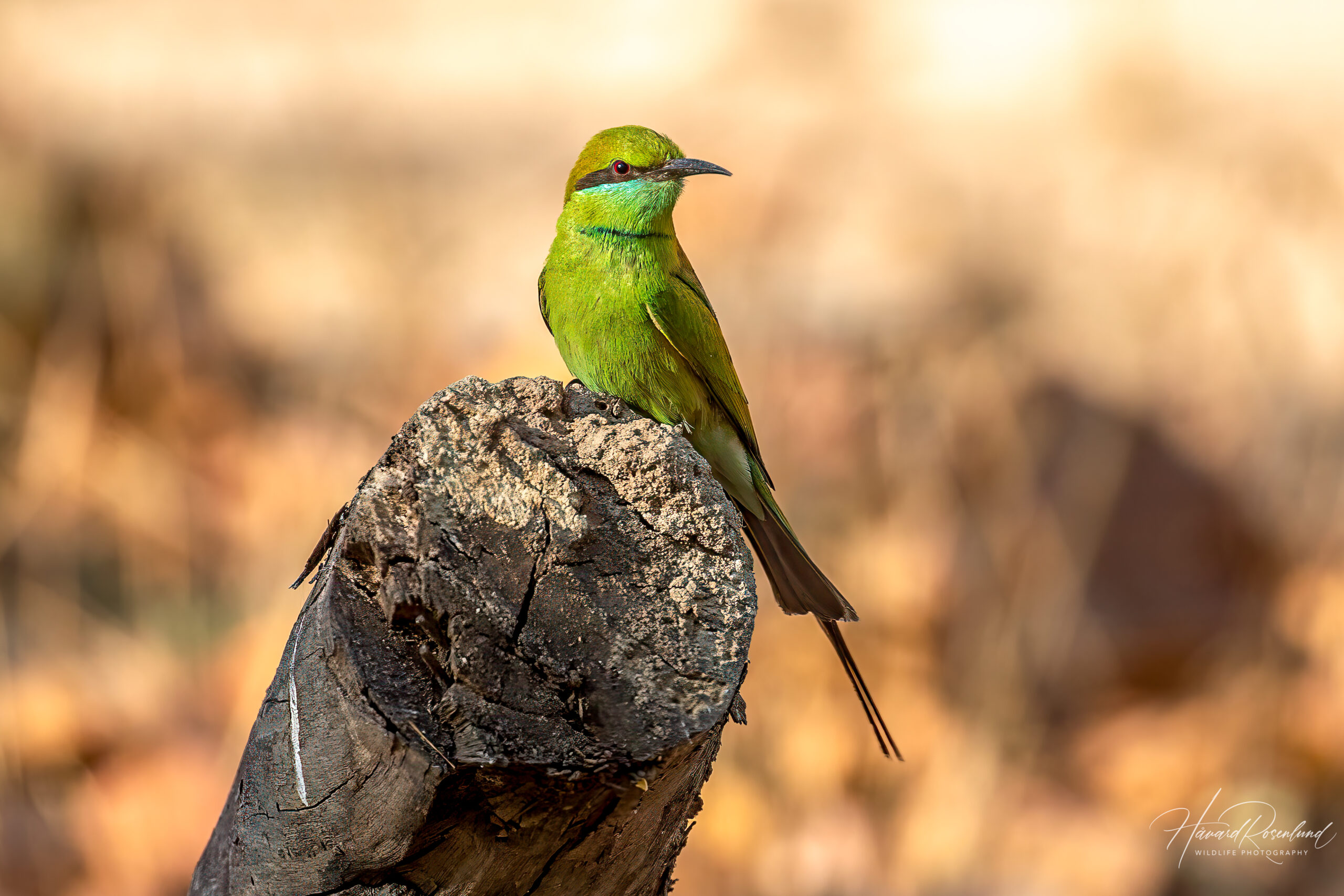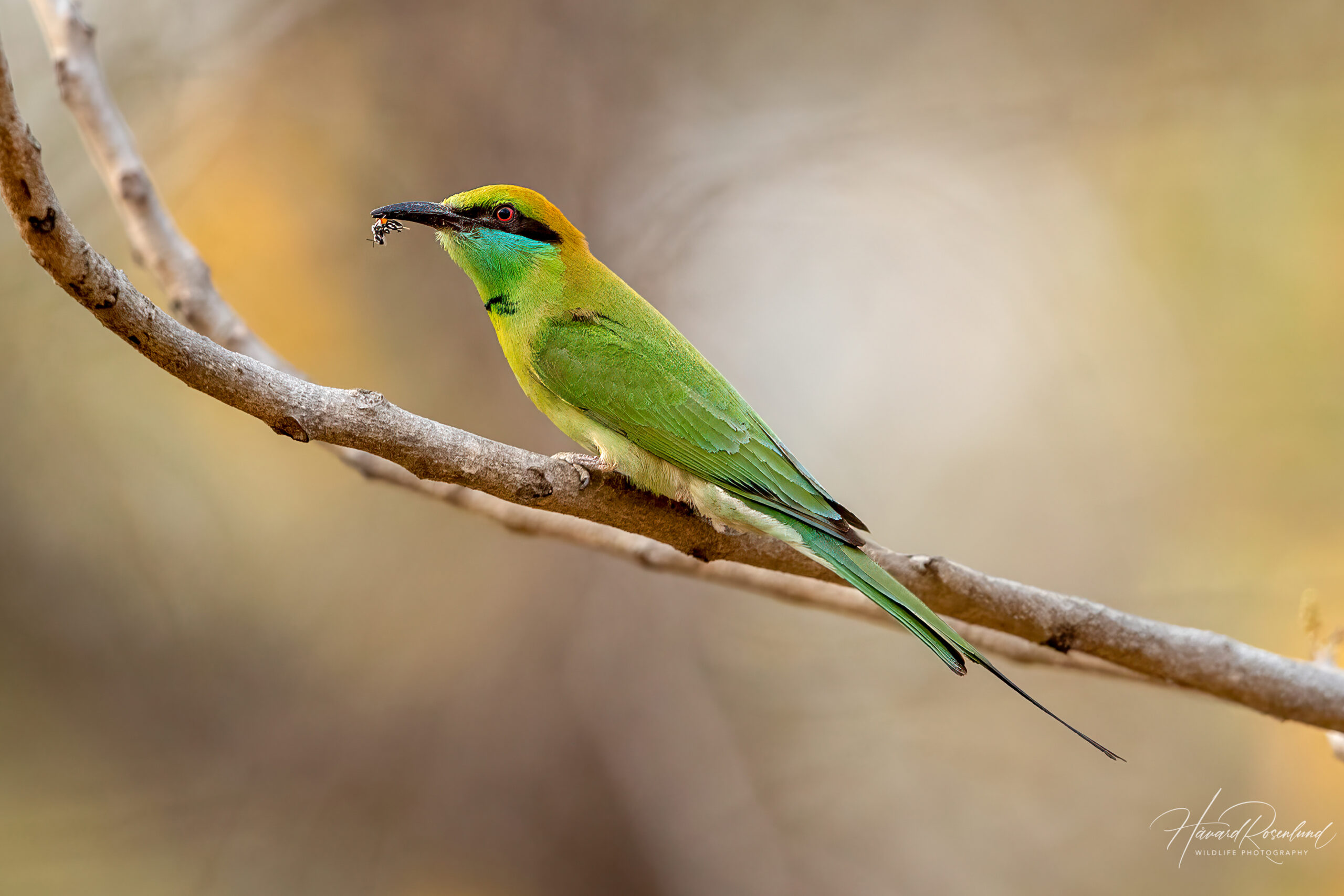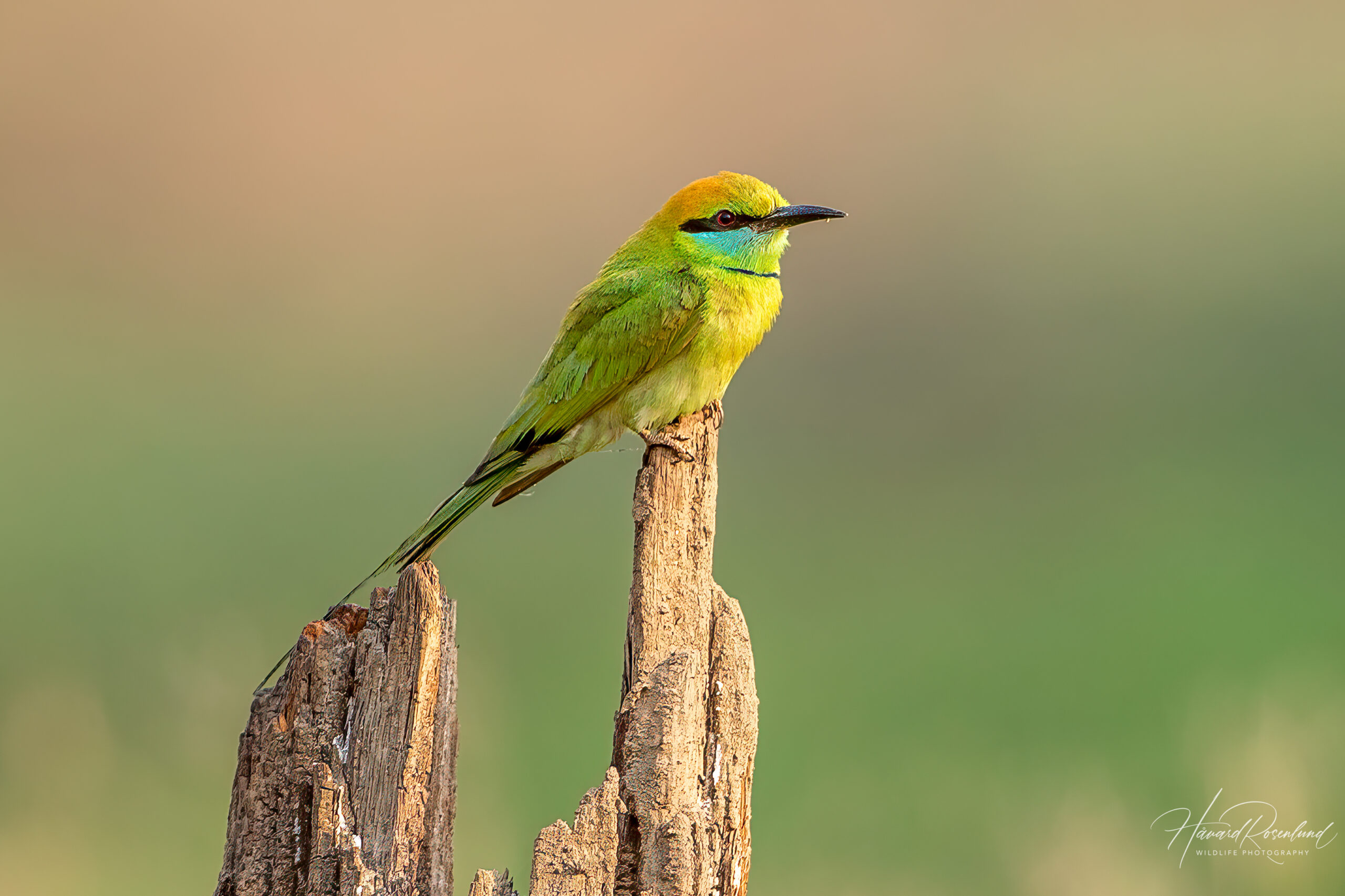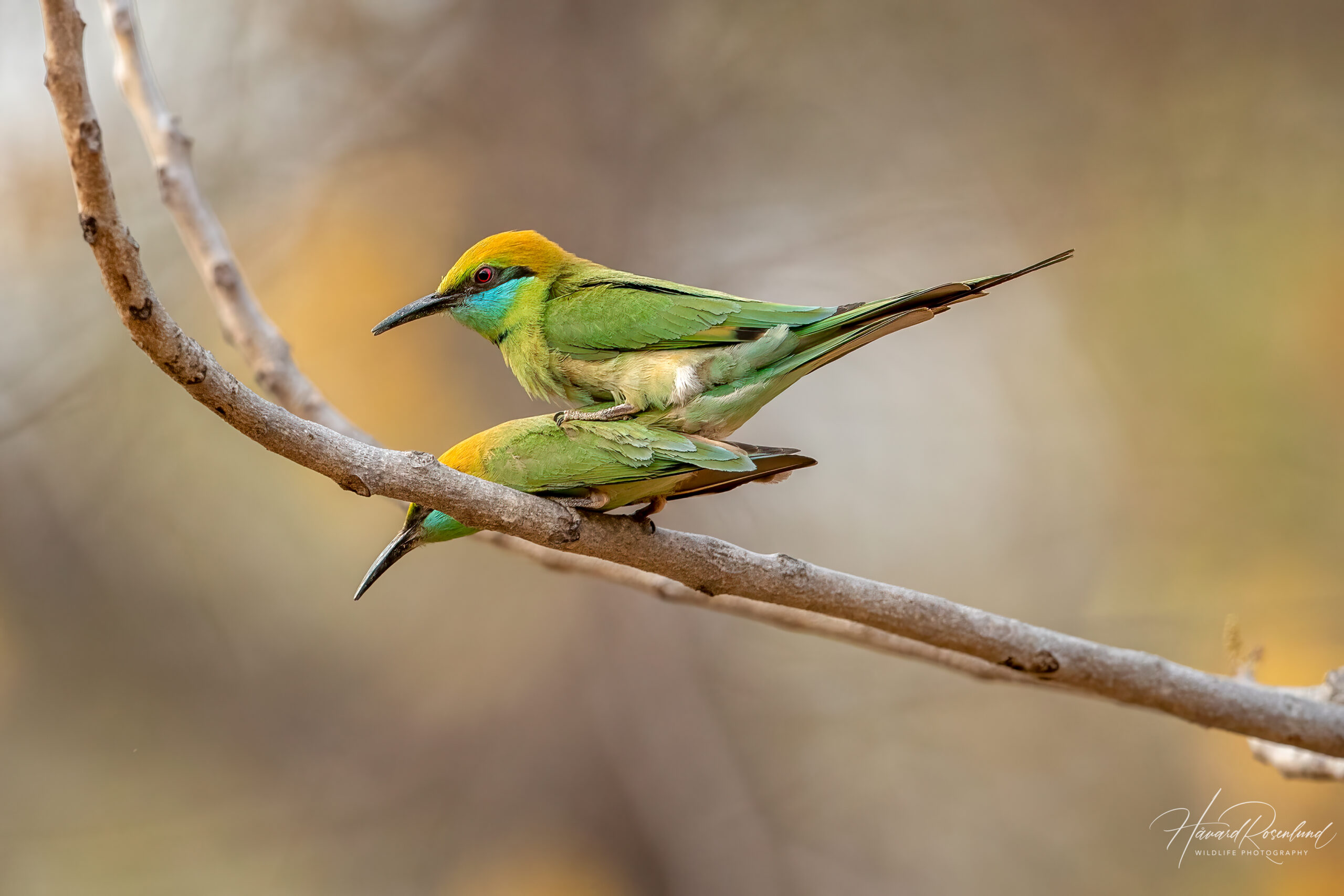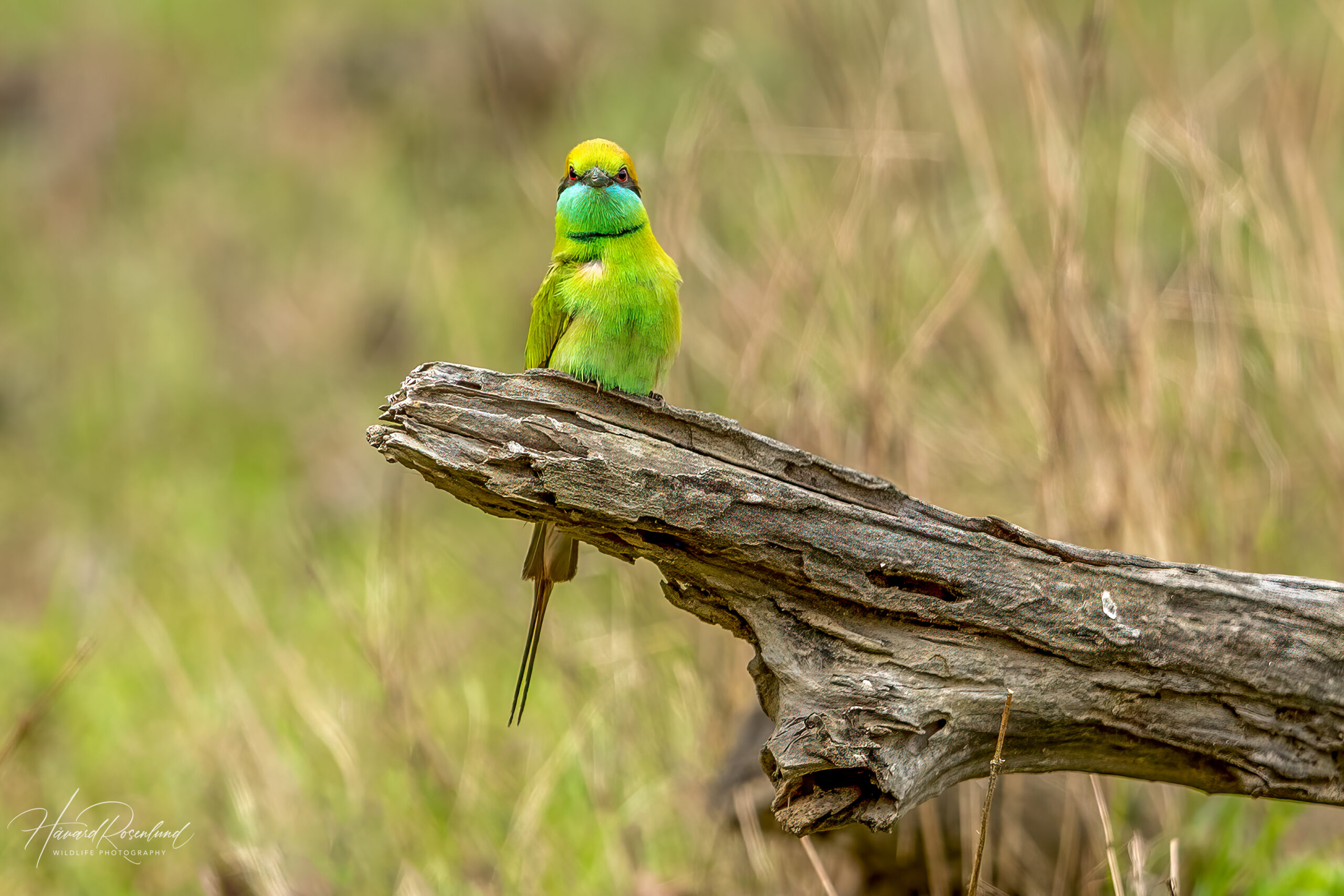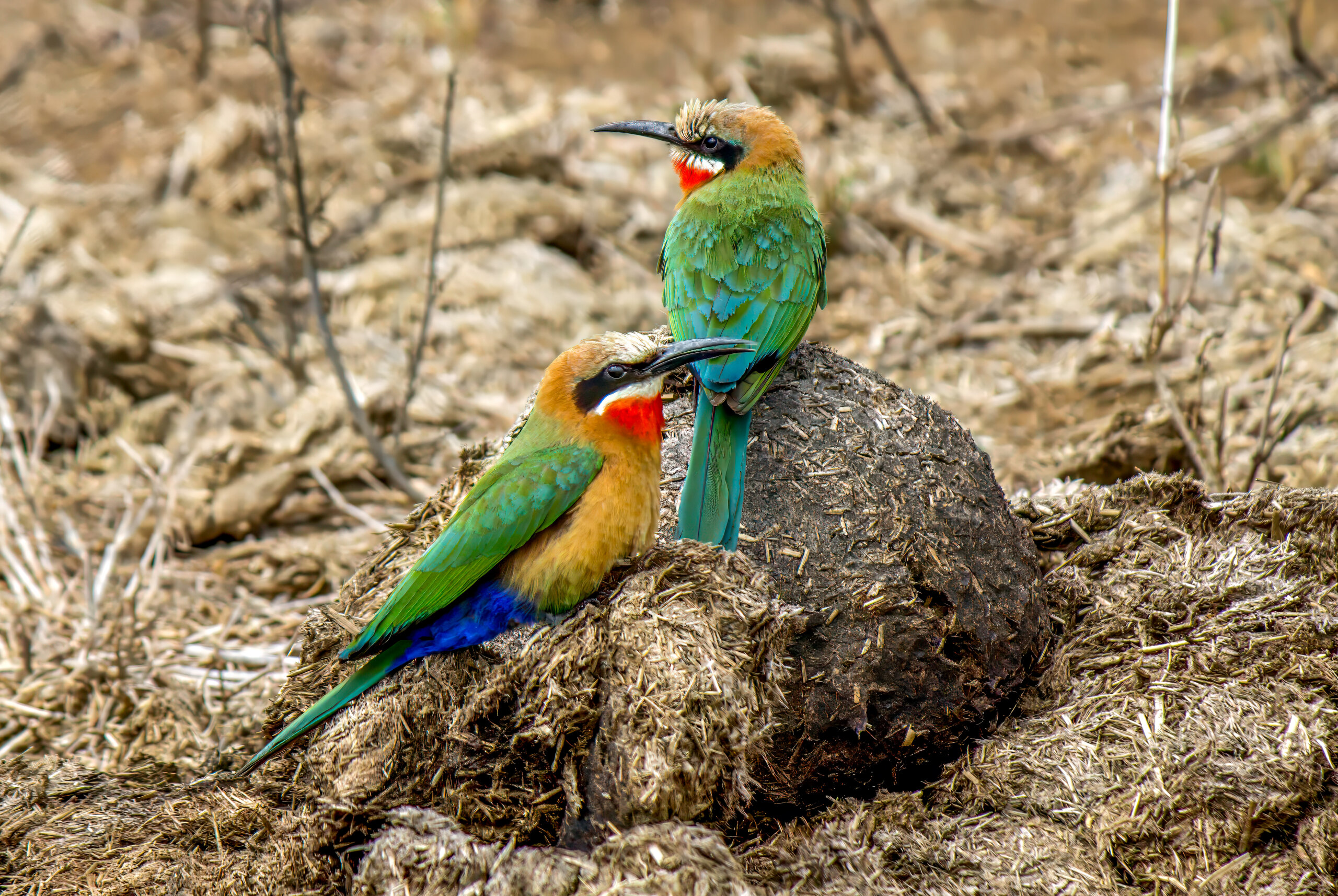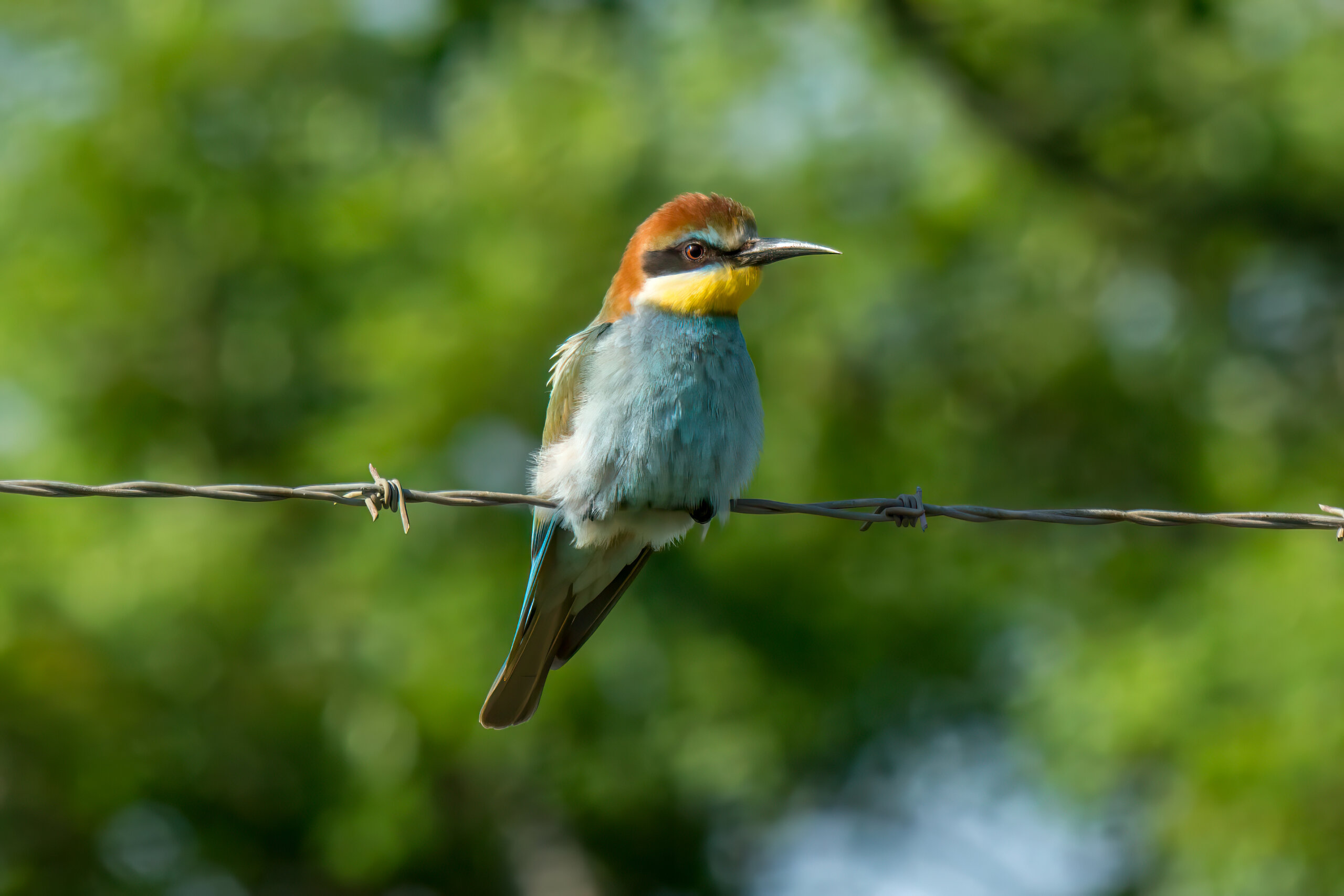Asian Green Bee-eater
(Merops orientalis)
Description
The Asian green bee-eater (Merops orientalis) is a vibrant and small-bodied bee-eater found across much of South and Southeast Asia. It measures about 16-18 cm (6.3-7.1 in) in length, with the male typically slightly larger than the female. This bird is characterized by its bright green color, a blue throat with a black gorget that separates the throat from the belly, and elongated central tail feathers which are often seen in flight. The crown is tinged with a golden rufous color. Plumage does vary across its range, with variations in the amount of blue and golden rufous it has on throat and head. It was previously considered conspecific with both the African green bee-eater (Merops viridissimus) and the Arabian green bee-eater (Merops cyanophrys), but has since been recognized as a distinct species based on vocal and physical differences.
Diet & habitat
Asian green bee-eaters inhabit open woodlands, grasslands, and areas near human settlements where they can easily find perches to scout for food. Their diet primarily consists of insects, especially bees, wasps, and dragonflies, which they catch in flight. These birds employ a hunting technique where they perch to watch for prey and then catch them mid-air with impressive agility. After capture, they return to their perch to beat the prey against the perch to remove the sting before consumption.
Nesting
The breeding season of the Asian green bee-eater tends to align with the onset of the monsoon season, facilitating an abundance of insect prey. They nest in sandy banks, roadside cuts, or similar environments where they can dig tunnels to lay their eggs. The nest is a burrow dug by both sexes, typically 1-2 meters deep, which ends in a widened chamber for the eggs. Clutches usually consist of 4-7 spherical white eggs. Both parents participate in incubation, which lasts about 2-3 weeks, and in feeding the nestlings. The young fledge approximately three weeks after hatching and are cared for by the parents until they become independent a few weeks later.
Status
The IUCN lists the Asian green bee-eater as least concern due to its wide range and a large populations that appear to be increasing in numbers. However, they are subject to local threats, including habitat destruction and the use of pesticides which reduce their insect prey populations.




